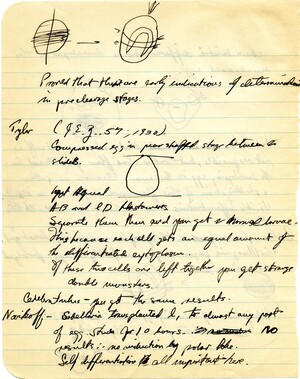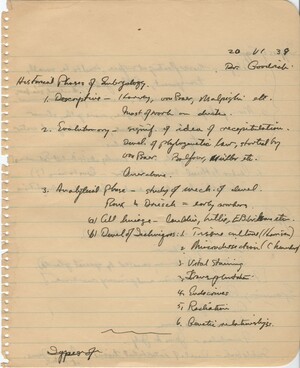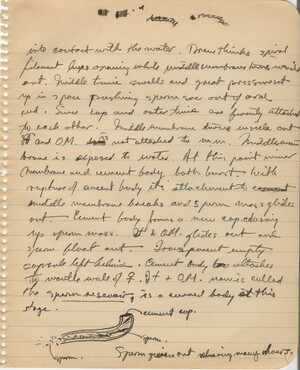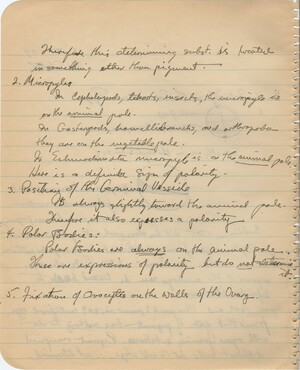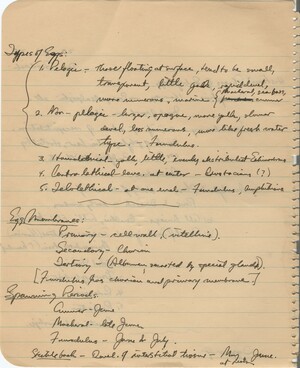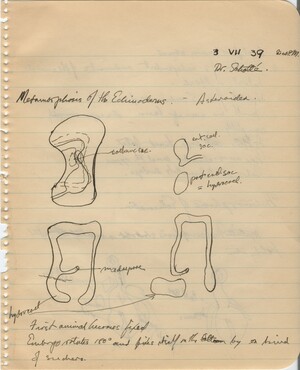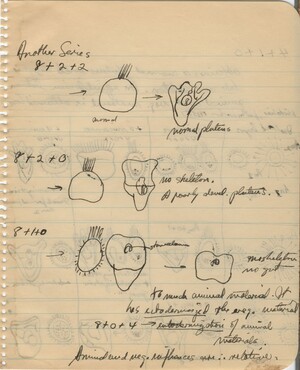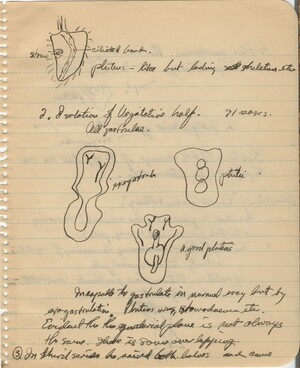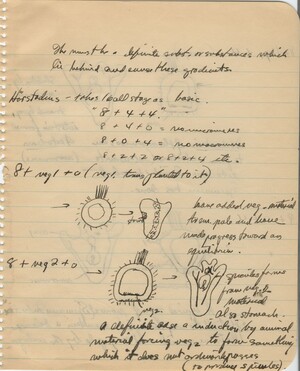Trinkaus, John Phillip - Papers
Notes from Viktor Hamburger's lecture. Trinkaus continues his notes on different researchers approaches to experimental embryology with information about Tyler and Novikoff (includes diagrams)
Notes from Hubert Goodrich's lecture, 'Historical Phases of Embryology". Trinkaus notes three phases: descriptive, evolutionary, and analytical, and gives notes on each
Notes from Viktor Hamburger's lecture. Trinkaus begins notes on the "Formation of the Spermatophore" with a diagram and discussion of the "Process of Ejaculation" most likely in the squid
Notes from Viktor Hamburger's lecture. Trinkaus continues his notes on the process of ejaculation, including a diagram
Notes from Oscar Schotte's lecture. Trinkaus continues his notes on the the structure of the echinoderm egg, with two diagrams, then begins notes on insemination in starfish with a diagram
Notes from Oscar Schotte's lecture. Trinkaus continues his notes on the echinoderm egg with the determination that "Therefore this determining subst. is located in something other than pigment." He creates four categories for his notes on this page: 'Micropyles', 'Position of the Germinal Vessicle', 'Polar Bodies', and 'Fixation of Oocytes on the walls of the Ovary'
Notes from Hubert Goodrich's lecture. Trinkaus' notes on 'Types of eggs', 'Egg membranes', and 'Spawning periods'
Notes from Oscar Schotte's lecture. Trinkaus continues his notes on the history of research on echinoderms, including information on Jacques Loeb, Hans Driesch, and Theodor Boveri. Trinkaus begins notes on the "Development of the Egg" with information on "inherent factor or potencies (Internal factors)"
Notes from Oscar Schotte's lecture. Trinkaus begins notes on the 'metamorphosis of Echinoderms' with four diagrams of an echinoderm embryo
Notes from Oscar Schotte's lecture. Trinkaus continues his notes from the previous page on recombination experiments for the different cell stages (with diagrams)
Notes from Oscar Schotte's lecture. Trinkaus continues the outline that he started on the previous page with a diagram of the pluteus, "Isolation of Vegatative half", and "In third series he raised both halves"
Notes from Oscar Schotte's lecture. Trinkaus continues notes from the previous page on Runstrom's double gradient theory. Then begins notes on Horstadius and recombination experiments for the different cell stages (with diagrams)

